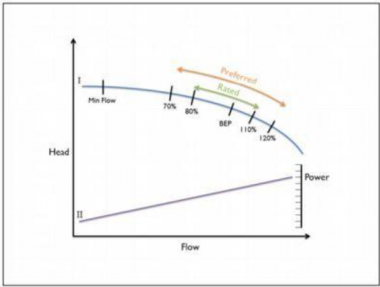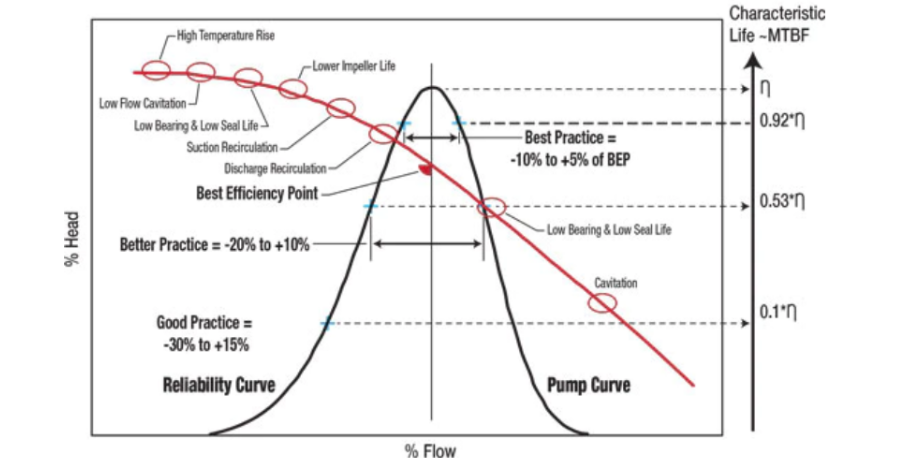Theory bites are a collection of basic hydraulic theory and will touch upon pump design and other areas of pump industry knowledge.
The preferred operating range, or POR, is a region of the pump curve defined in relation to the best efficiency point (BEP), and represents the portion of the curve in which continuous operating conditions should be located if possible.
 The preferred operating range (POR) is defined by centrifugal pump standards such as the Hydraulic Institute Standards (HI) or American Petroleum Institute Standard 610 (API 610). This is in contrast to the AOR which is a manufacturer-defined region of the curve.
The preferred operating range (POR) is defined by centrifugal pump standards such as the Hydraulic Institute Standards (HI) or American Petroleum Institute Standard 610 (API 610). This is in contrast to the AOR which is a manufacturer-defined region of the curve.
The POR, as defined by HI or API 610, varies depending on the type of impeller, but in most cases extends from 70% to 120% of flow at the best efficiency point (BEP). In some high-energy pumps the POR is smaller, and may only extend from 80% to 115% of flow at BEP.
Picture Source: WaterWorld (2016). Allan Budris
Read more Theory Bites!




